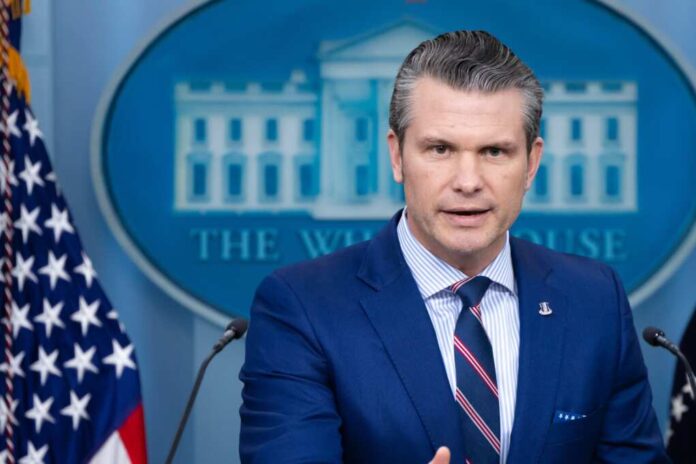
Defense Secretary Pete Hegseth’s Pentagon cost-cutting crusade has saved $10 billion, exposing deep-rooted inefficiencies and triggering a broader debate about government spending and reform.
At a Glance
- Defense Secretary Pete Hegseth has cut $10 billion in Pentagon spending through aggressive reforms
- Measures include canceling non-essential contracts and reducing bureaucratic overlap
- The Pentagon reportedly has more contractors than civilian employees
- Secretary of State Marco Rubio plans to downsize the State Department by 15%
- A judge blocked Trump-era changes to Voice of America amid media reform battles
Hegseth’s Budget Blitz Shakes the Pentagon
Defense Secretary Pete Hegseth has implemented a sweeping series of cost-cutting measures that have saved the Pentagon more than $10 billion. His strategy includes slashing bureaucracy, eliminating redundant IT and consulting contracts, and curbing executive perks in favor of bolstering combat readiness. “Converting consultants into combat power, that’s what we’re doing here at the Defense Department,” Hegseth said.
Watch a report: Hegseth Declares War on Pentagon Waste.
Among the most revealing disclosures: the Department of Defense now employs more private contractors than civilian staff—a trend Hegseth labeled symptomatic of entrenched inefficiency. His crackdown marks a rare effort to inject fiscal restraint into an agency traditionally shielded from budgetary scrutiny.
State Department Shake-Up and Media Reform Battles
Secretary of State Marco Rubio is advancing a parallel reform effort at the State Department, proposing a 15% staffing reduction and the closure of low-priority embassies. He has argued that segments of the department have become “beholden to radical political ideology”, advocating for a return to streamlined, mission-focused diplomacy.
At the same time, media reform efforts have encountered legal resistance. A federal judge recently blocked efforts to restructure Voice of America, the government’s international broadcasting service. The court’s decision illustrates the broader resistance facing executive-led reform initiatives aimed at overhauling federal institutions viewed by critics as ideologically entrenched.
Broader Context: Government Overhaul in Focus
From reining in Pentagon spending to restructuring diplomatic and media apparatuses, the federal government is undergoing a period of intense internal realignment. Officials are increasingly targeting bureaucratic excess, seeking to recalibrate institutions toward greater efficiency, accountability, and alignment with core national objectives.
The sweeping changes initiated by Hegseth and Rubio underscore the mounting pressure on legacy institutions to justify their budgets, roles, and relevance in a rapidly evolving political landscape. Whether these reforms will produce lasting structural change or face reversal under future administrations remains to be seen. But for now, they offer a rare glimpse into an assertive effort to reduce federal sprawl and refocus government priorities.




















